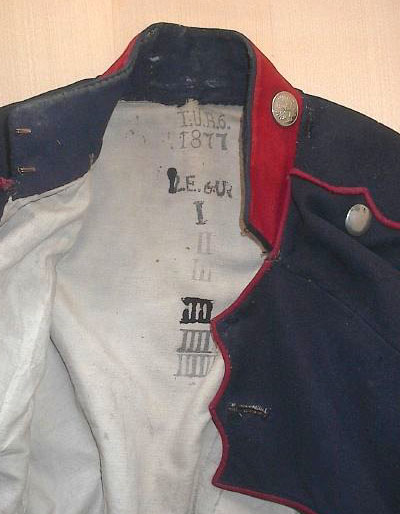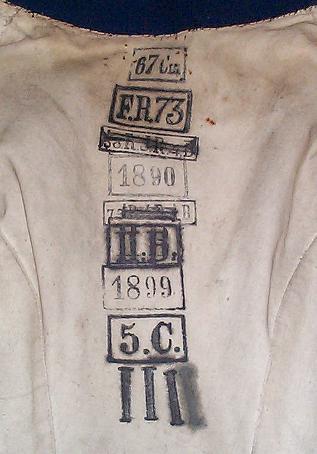Kjell-Bjarne
New member
Hello All,
I just read Tony's post on Pickelhaube issue dates, and it prompted me to finish translating an article I found on a German web site and have been meaning to post for some time. It complements Tony's comments and thoughts. The original can be viewed at:
http://www.altearmee.de/index2.htm
on page 6 of the article entitled "Uniformen" (Uniformen u.a. / Uniformen- Tips, Tricks und mancher Rat)
I didn't translate Garnitur and Kammer as I think we are all familiar with those terms. An excerpt from the article:
Unfortunately there is no specific mention of helmets. I have two helmets in my collection marked as 3rd Garnitur which suggests that helmets were graded and issued following the same guidelines as other articles of clothing. Maybe those of you with larger collections have other Garnitur markings as well?
This article implies that uniforms were issued and reissued until they literally fell apart. It also hints at an explanation for the mixture of old and new items in photographs that we as collectors find so confusing. Another interesting implication is the sheer number of uniforms each Kammer must have maintained: six per man!
I just read Tony's post on Pickelhaube issue dates, and it prompted me to finish translating an article I found on a German web site and have been meaning to post for some time. It complements Tony's comments and thoughts. The original can be viewed at:
http://www.altearmee.de/index2.htm
on page 6 of the article entitled "Uniformen" (Uniformen u.a. / Uniformen- Tips, Tricks und mancher Rat)
I didn't translate Garnitur and Kammer as I think we are all familiar with those terms. An excerpt from the article:
The 1st Garnitur was only issued for special occasions such as holidays, the Kaiser's birthday, and special parades, etc; the 2nd Garnitur for parades, march-ups (Aufmärschen), and important holidays involving military presence. Put simply, these two Garnituren were stored in the Kammer and only issued for appropriate occasions. The 3rd and 4th Garnitur were kept in the soldier's locker, a wooden closet introduced in 1890. For drill and normal barracks duty, the twill uniform was worn, a simple "fatigue uniform" of bleached, undyed linen (later cotton). The 4th Garnitur was worn for everyday duty; the 3rd Garnitur on Sunday furlough or other representative occasions.
(…)
The 5th Garnitur was never to be worn in peace time, in wartime only during training, and otherwise only "as required."
(…)
Normally, upon completion of military service …the 5th or 6th Garnitur was issued (for the trip home) and returned after the soldier arrived home.
(…)
Kammer-stamps are found inside the uniforms which indicate neck size, arm length, leg length, etc, in Arabic numbers (ready-to-wear clothing was unknown in Germany until 1935). The Garnitur number appears in Roman numerals. The annual inventory is evidenced by "strike-outs" and new stamps: once a year the Kammer's inventory was reevaluated. The basis for this evaluation was the life expectancy of the clothing as specified in the regulations. This varied considerably according to arm of service and especially rank. According to regulations, e.g., the regulations of 1912, an enlisted tunic was to be replaced after twelve months at the latest; NCO tunics were to be replaced after eight months. This must be viewed from its historical perspective: this refers to the wearing of two uniforms, one of which was worn everyday as the only suit of clothes. In an age in which dry cleaning and washing machines were unknown, a frugally long Prussian time.
Unfortunately there is no specific mention of helmets. I have two helmets in my collection marked as 3rd Garnitur which suggests that helmets were graded and issued following the same guidelines as other articles of clothing. Maybe those of you with larger collections have other Garnitur markings as well?
This article implies that uniforms were issued and reissued until they literally fell apart. It also hints at an explanation for the mixture of old and new items in photographs that we as collectors find so confusing. Another interesting implication is the sheer number of uniforms each Kammer must have maintained: six per man!




